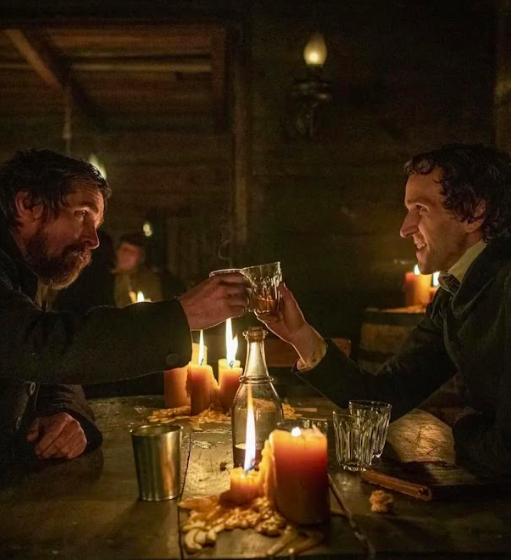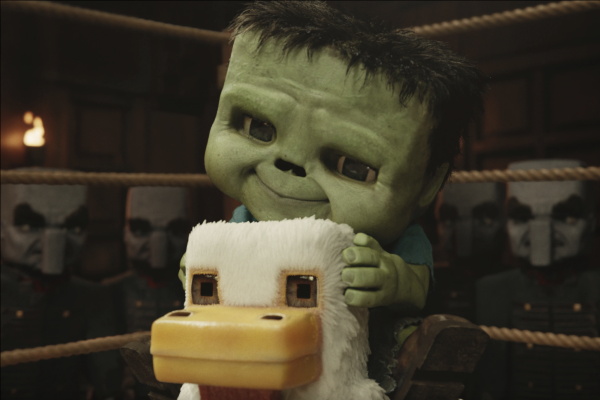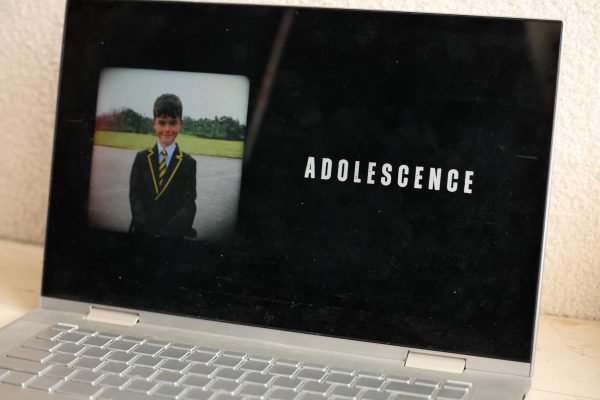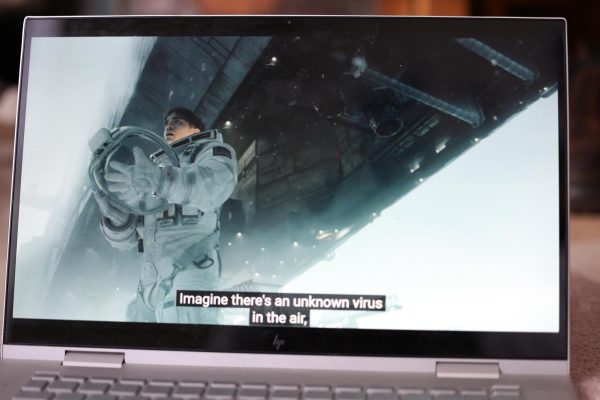“The Pale Blue Eye” Loses Sight of Poe’s Originality

“The Pale Blue Eye’s” attempt to mimic the poet from which it comes stops it from reaching any greatness of its own. (Courtesy of Instagram)
The title of Scott Cooper’s newest film, “The Pale Blue Eye,” comes from a story of Edgar Allan Poe’s, featuring the poet himself as a protagonist. Actor Harry Melling switches out his native cockney accent for a Southern drawl, transforming into the familiar image of the brooding, miserable and alcoholic Poe as a young undergraduate at West Point. Cooper, the director and screenwriter, tries to imbue the traditional understanding of Poe, mainly through his sudden admission halfway through that most of his classmates hate him, but a certain quality of distortion remains pervasive throughout the film. This makes it difficult to create a very convincing or interesting depiction. Curiosity is a dominant theme throughout Poe’s work, but there is little to be curious about in “The Pale Blue Eye.”
The film’s premise revolves around a West Point candidate who supposedly hanged himself in the middle of the night. Sometime after being discovered by a night watchman and brought into the academy’s morgue, his chest was cut open and heart removed, prompting the school’s superintendent (Timothy Spall, with an expression of constipation permanently glued across his face) to hire a detective, Landor (Christian Bale), to investigate the unnerving chain of events.
Perhaps the lack of curiosity comes from Cooper’s choice in the role that Poe is supposed to be playing in this murder mystery. Despite deriving its whole gimmick from a fictional interpretation of a real episode in Poe’s life (Poe was sent to West Point by his foster father but was expelled, largely through his own design, just over six months later), the movie never quite commits to Poe. Instead, it shifts the narrative perspective and dramatic crux onto the detective, Landor, a sullen counterpart to the boyish poet. What results is a terribly promiscuous film, skitting flirtatiously from one Poeian-Gothic theme to another. It’s a movie which, not finding in Poe’s oeuvre any story with a thick enough plot to sustain a two-hour long feature film, tries to compensate by plundering his tales for any conceit that seems capable of giving some “local flavor” to what is otherwise an entirely boilerplate murder story. There’s an obsession with the niceties of human anatomy, a close mingling of the scientific and the supernatural, a cursed ancestor who still exerts his influence on the living and a hero plunged into danger and intrigue out of his own reckless, insatiable curiosity.
Now, Landor, the hero, is technically retired after a long and illustrious career, inhabiting the environs of West Point, and becomes all taciturn and dour-faced whenever speaking about his daughter, Mattie, who “disappeared” mysteriously years before the film begins. His generally anti-social modus operandi has two exceptions: for a minor love interest in the form of a local tavern-keeper (Charlotte Gainsbourg), who is scarcely accorded more than five lines of dialogue, and of course for Poe, who quickly insinuates himself into Landor’s investigation after offering his services as an inside man willing to spy on his fellow cadets in order to track the culprit down. The ensuing events proceed in a somewhat unpredictable, but uninteresting fashion, with only the inexplicable behavior of the resident physician’s wife (Gillian Anderson) able to inject a few, fleeting moments of fascination into the film.
The viewer might have been kept from boredom about 30 minutes in had there been any real engagement with Poe’s life or work, but all we get are a few lazy gestures meant to present these wholly fictional events as somehow profoundly influencing Poe’s art. A story that is neither faithful nor well-painted, and which, with the aid of Masanobu Takayanagi’s cliché-ridden cinematography, sets the stage for a movie whose most basic flaw is simply that it takes itself too seriously. Roger Corman’s film adaptations of Poe’s stories were ridiculous, but managed to convince audiences by embracing their unbelievable and exaggerated elements. They were fun. “The Pale Blue Eye,” unfortunately, takes a rather more poe-faced approach to its subject-matter, and in setting out to recount a murder mystery that purports to depict Poe’s step from boy to man, from artist manqué to mature poet, forgets something that was central to so much of Poe’s art: it isn’t so much the characters who matter, but the world that they inhabit.












































































































































































































